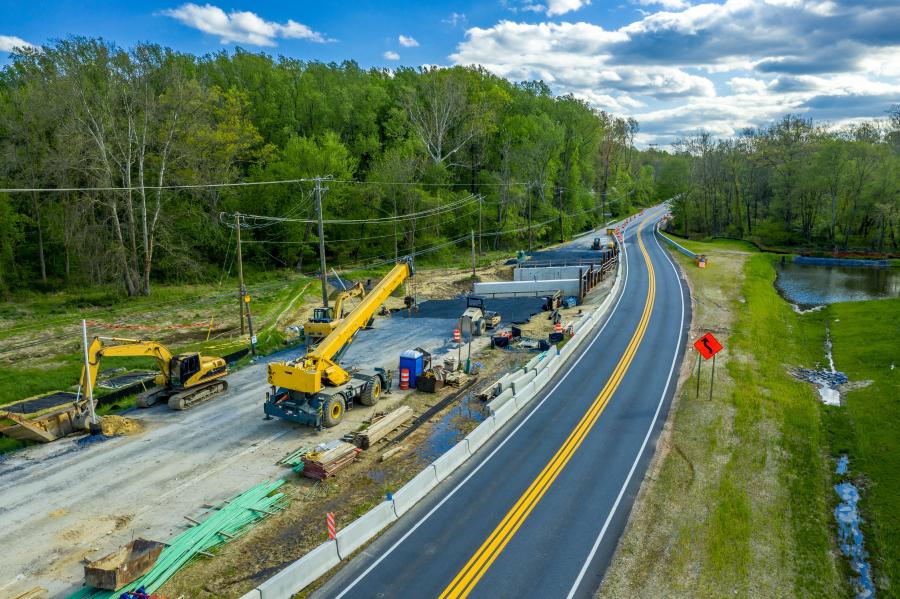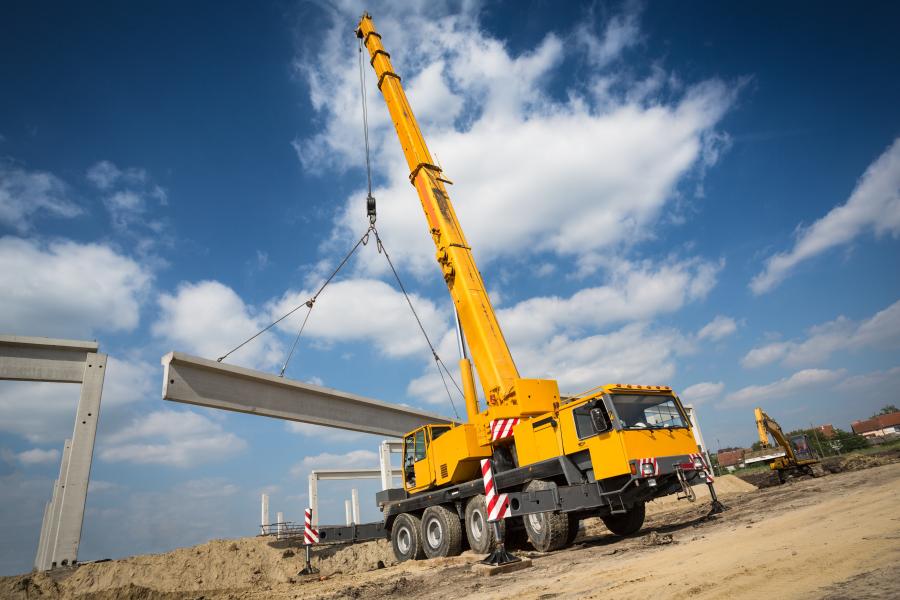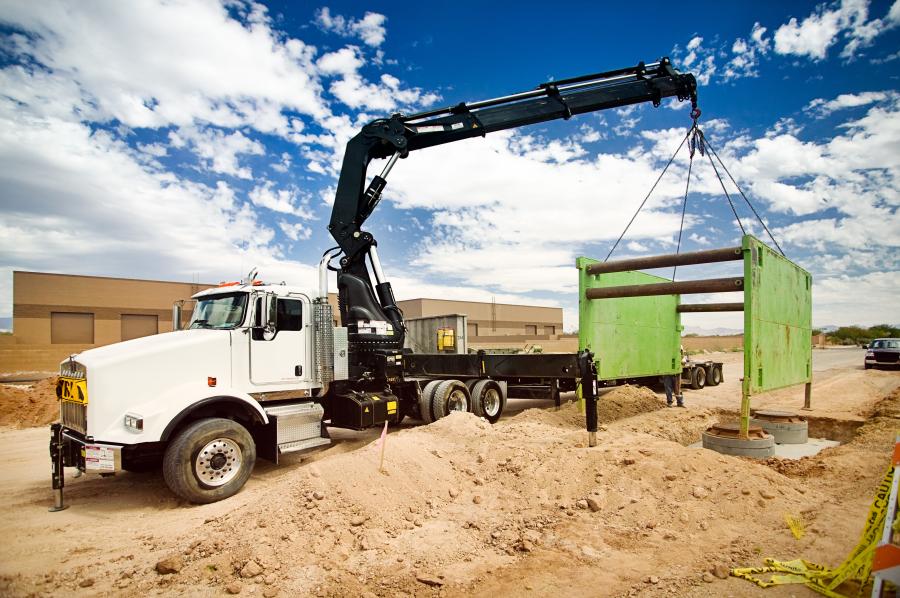
Mon January 31, 2022
Lucy Perry – CEG CORRESPONDENT
Whether you own a crane rental house or you rent cranes for your business, just putting a machine to work is not enough to make money anymore. If you aren't operating the right rig for the job, you're missing a great opportunity to maximize profits. And if you're beginning to log a repeated pattern of down-renting with certain cranes in your fleet, you're flushing money down the drain.
"If you're in the crane industry, then it's highly likely that you already know that overkill or down-renting is an industry-wide issue," said Talmadge Wagstaff of asset management software developer Redlist.

"You book a job that only needs a 40-ton crane, but on the day of the lift, none of your 40-tons are available. You're forced to send a bigger crane, but you have to bill for a 40-ton, which cuts into your profit margins. Do you know how much that is costing you every year?"
"A couple of years ago, you would be able to just look out at your yard and if it was empty, then you knew you were busy and things were good," said Matt Reinhart, senior marketing specialist of asset tracking software Fleet Cost & Care. "In today's competitive environment, you need to know that if a piece of equipment is leaving the yard, you are maximizing your profit. If you are consistently down-renting equipment, then you are not reaching your company's profit potential."
As Reinhart explains it, down-renting happens when you need to select a crane that has a higher lifting capacity than what is required for the job.
"For example, a job might require a crane with a 50-ton capacity, but you might only have a 75-ton crane available," he explained in a blog post on Fleet Cost & Care's website. "In order to ensure you still get the job, you put the 75-ton crane on the 50-ton job."
No Good for Anyone
While this is a common practice, it can be problematic because the customer will only be responsible for paying the 50-ton rate, he said. You land the job, but you end up eating into your own profit by renting out a larger crane than necessary.
On the flip side, if you're the crane renter, it's important that the machine you're renting saves you time. Otherwise, you're wasting time and money, believes MacAllister Rentals of Indianapolis, Ind.
Maybe you've been hired for a bigger job that requires more time and power to complete. If you have several larger jobs lined up, you want to make sure the crane you've rented is right for every job you send it to.
"When business owners, contractors or operators rent equipment that doesn't offer a high enough load or lift capacity, the operator ends up working harder, not smarter, to get the job done," a MacAllister blog post states. "Down-renting means you're simply not getting the most from your equipment rental."

Working with down-rented equipment can cause you to double or triple the time you spend on a job completing whatever task you're on, added MacAllister.
"Down-rented equipment wastes operator time, costing business owners more in overhead costs than necessary. It also tacks time on to your rental agreement, costing you more money to have the equipment available to you longer."
Another reason to avoid going with down-rented equipment? Safety and liability concerns. When an operator is using equipment that doesn't have a high enough load capacity, he or she can end up overloading the machine in an attempt to be more efficient and save time, according to the blog post.
"Models have maximum capacities for a reason. Failing to follow these can cause equipment failure and risk the safety of the operator and others on the job site. It could end up costing you, the renter, in unexpected repair costs, as well."
Customers can derive other benefits from not contracting down-rented equipment. The right rig means you can complete projects more efficiently. It ensures attachment compatibility if you already have attachments designed for that rig.
The right machine saves you equipment operating time. It shortens the rental agreement time and prevents machine overloading, which can risk parts failure. Finally, it ensures jobsite safety because you're running the right capacity for the job.
Avoid Down-Renting
Understanding how you can avoid renting equipment that's too small for the job is key to prevent down-renting and optimize profits, believes MacAllister. Start by choosing a trusted rental provider with knowledgeable staff that can recommend the right size right for your job.
You should know ahead of time the right equipment capacity you'll need by understanding what the job requires, believes the rental house, and you should book your equipment rental in advance, so the provider won't give you the next best option.

"When in doubt, go with a higher load capacity, but be careful not to fall for an up-renting tactic," advises MacAllister. "Going with the right size equipment with a bigger capacity conserves operating time, which saves you money."
You do know down-renting is a problem and an expensive one at that. But solving your down-renting issue can be more complicated to put into action, said Wagstaff.
An overkill or down-renting report is the first step, but it requires either manual data entry and spreadsheets or an integrated software system that handles it for you with no extra work.
"The ultimate purpose of a down-renting report is to provide you with the information needed for crane purchasing decisions. However, we recommend going deeper into the issue with a root cause analysis," said Wagstaff.
"Identifying the root cause of your down-renting is the key component to eliminating overkill costs. In some cases, it's not an inventory issue. Instead, your down-renting for a certain crane class may be due to aging assets or out-of-service maintenance issues."
Reinhart of Fleet Cost & Care also suggests upping your asset-tracking practices starting with tracking how often a unit goes out at a down-rented rate.
"This situation may be unavoidable at times, but most companies don't track how often they have to down-rent their equipment and therefore do not know how much it cuts into their profits," said Reinhart.
Taking the time to understand how down-renting affects revenue at the unit level over time is crucial, he said. Operations personnel can then use this data to re-examine potential gaps in your fleet.
"If you determine you are only renting a 275-ton crane as a 275-ton unit 52 percent of the time and are down-renting the other 48 percent, you may want to consider changing up your fleet in this area," said Reinhart. "Can you operate a crane at a lower tonnage capacity and still serve all your customers?"
With the help of a solid asset-tracking program, a detailed down-rent report can help you do that.
Besides pinpointing what type of units are consistently down-rented, determine at what capacity the cranes were being rented to, and then identify the gaps in your fleet, he suggests.
"Use data from your down-rent summary and utilization reports as a management tool to get more from your sales department," urges Reinhart. Next, establish the needs of your fleet and your customers.
It's smarter, he said, to "rid yourself of a more expensive unit that does not get rented out at its proper unit type and purchase one in a more frequently used capacity."
Use the data from your fleet management program to make more informed business decisions, advises Reinhart. Start by scheduling regular meetings with your sales team to share with them the system's reporting capabilities.
"See up-to-the-minute resource availability with your fleet management software to avoid down-rent situations. Provide your sales team with feed back from internal reports so they can be better informed on how their decisions can affect the company's operation."

Finally, determine job profitability by reviewing job profit and loss summary reports, he advised. These reports will help you determine if you are making money on the jobs where you down-rent.
Reinhart said crane owners can go a step further with a good look at preventive maintenance. Begin by monitoring preventive maintenance activities with the goal to reduce down-renting which occurs as a result of breakdowns or missed service.
"Comprehensive fleet management apps can track and report data regarding coming due activities so you can stay out in front of predictable maintenance down times and hopefully mitigate unforeseen break downs due to vigilant maintenance protocols," he said. "Keep your units ready to be rented to maximize your asset utilization. When sales teams are effective and efficient, it brings success across your entire organization."
Where a couple of years ago an empty yard meant you were busy, in today's competitive environment you need to know that if a piece of equipment is leaving the yard, you are maximizing your profit, believes Reinhart.
"If you are consistently down-renting equipment, then you are not reaching your company's profit potential." CQ
 Cranes Equipment
Cranes Equipment Articles
Articles Email Updates
Email Updates Sell Your Machines
Sell Your Machines

 Cranes Equipment
Cranes Equipment Cranes Dealers
Cranes Dealers Cranes Articles
Cranes Articles Email Updates
Email Updates Sell Your Machines
Sell Your Machines